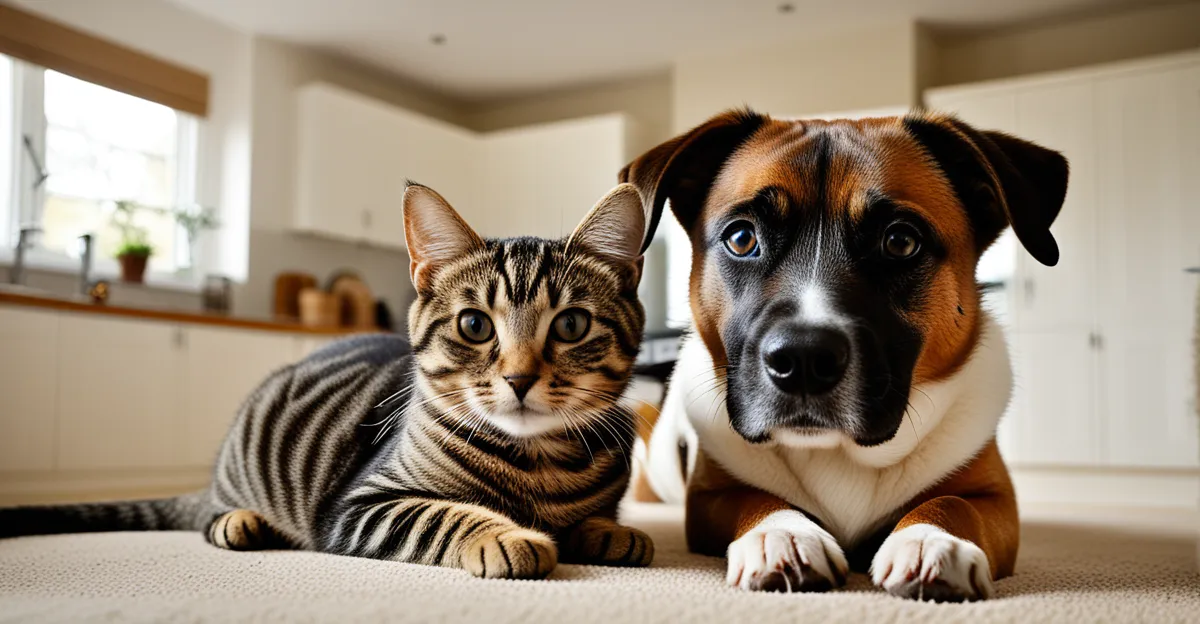Essential Steps for Pet-Proofing Your Home
Pet-proofing your home is a crucial task for new pet owners eager to create a safe environment. Begin by thoroughly inspecting every room, focusing on common hazards that pets frequently encounter. In the UK, particular attention should be given to household safety measures, such as securing loose wires and ensuring dangerous chemicals or cleaning products are stored out of reach. These steps prevent accidental poisoning or injuries.
Consider tailoring your pet-proofing strategies depending on whether you have a dog or a cat. Dogs often need secure areas to prevent chewing on furniture or electrical cords, while cats require safe spaces that allow climbing yet prevent access to toxic plants common in UK homes. Both benefit from removing small objects that could cause choking or digestive blockages.
Also to discover : How Can You Promote Healthy Living for Your Pets in the UK?
Creating a calm and secure environment before your pet arrives also reduces stress and encourages healthy adjustment. This preparation involves removing hazards and stocking up on pet-safe cleaning supplies and pet-friendly furniture covers. Establishing a safe home environment not only protects your pet but also provides peace of mind as you welcome your new companion into your life.
Room-by-Room Safety Tips
Practical guidance for each space in your home
Also read : How can you find the best UK pet boarding facilities?
Focusing on room safety allows new pet owners to systematically address hazards. In the living room, secure loose wires behind furniture to prevent chewing accidents and move fragile items out of reach. Soft furnishings can shield pets from hard edges, reducing injury risk during play.
The kitchen is a high-risk zone. Store cleaning products and human food securely, as many common ingredients like chocolate or onions are toxic to pets. Keep bins covered, since curious pets may scavenge harmful leftovers. Also, watch for hot surfaces, especially around ovens and kettles.
In the bedroom, remove small objects such as hair ties or children’s toys from floors, as these can cause choking. For the bathroom, ensure medications and toiletries are stored safely; even small amounts swallowed can be dangerous. Non-slip mats help avoid slips for playful dogs or cats.
By addressing hazards room by room, you create a safer environment tailored for your pet’s lifestyle and habits. This methodical approach is essential for successful pet-proofing and building a home that supports long-term home safety for pets. It’s a practical first step for all new pet owners in the UK.
Securing Hazards Unique to UK Homes
Pet-proofing requires awareness of hazards common in UK households that may threaten your pet’s health. Toxic plants such as daffodils, lilies, and foxglove are widespread in many UK gardens and homes. These can cause severe poisoning if ingested, especially for curious cats and dogs. It’s vital to identify and remove or isolate such plants.
Electrical safety is another critical concern. Loose or exposed wires pose risks of electric shock and chewing injuries. Secure cables behind furniture or use protective covers designed for pet-proofing. This prevents pets from accessing cords, reducing the odds of accidents.
Poisoning prevention also involves safeguarding everyday substances. Common UK cleaning agents, antifreeze, and rodenticides can be deadly if accessed. Store these chemicals in locked cupboards or high shelves. Similarly, small choking hazards like children’s toys or hardware items must be kept away.
The blend of these UK household hazards requires a focused approach. New pet owners should conduct a thorough inspection to detect risks unique to their environment. Acting on these dangers improves home safety substantially and helps maintain a secure, hazard-free space tailored for pets’ wellbeing.











